Showing Spotlights 1849 - 1856 of 2785 in category All (newest first):
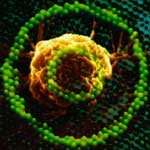 Even though traditional, digital computers have consistently increased in speed and complexity, they are limited by their reliance on sequential processing of instructions; i.e. no matter haw fast they are, they still process only one bit at a time. By contrast, individual neurons in our brain are very slow: they fire at only about 1000 times per second; however, since they are operating in a massively parallel way, with millions of neurons working collectively, they are able to complete certain tasks more efficiently than even the fastest super-computer. Another important distinction of our brain is that, during computing, information processing circuits evolve continuously to solve complex problems. An international research team from Japan and Michigan Technological University has now created a similar process of circuit evolution in an organic molecular layer, which also solves complex problems. This brain-like 'evolutionary' circuit has been realized for the first time in the world.
Even though traditional, digital computers have consistently increased in speed and complexity, they are limited by their reliance on sequential processing of instructions; i.e. no matter haw fast they are, they still process only one bit at a time. By contrast, individual neurons in our brain are very slow: they fire at only about 1000 times per second; however, since they are operating in a massively parallel way, with millions of neurons working collectively, they are able to complete certain tasks more efficiently than even the fastest super-computer. Another important distinction of our brain is that, during computing, information processing circuits evolve continuously to solve complex problems. An international research team from Japan and Michigan Technological University has now created a similar process of circuit evolution in an organic molecular layer, which also solves complex problems. This brain-like 'evolutionary' circuit has been realized for the first time in the world.
Apr 26th, 2010
 If you think that building an artificial human brain is science fiction, you are probably right - for now. But don't think for a moment that researchers are not working hard on laying the foundations for what is called neuromorphic engineering - a new interdisciplinary discipline that includes nanotechnologies and whose goal is to design artificial neural systems with physical architectures similar to biological nervous systems. One of the key components of any neuromorphic effort is the design of artificial synapses. The human brain contains vastly more synapses than neurons - by a factor of about 10,000 - and therefore it is necessary to develop a nanoscale, low power, synapse-like device if scientists want to scale neuromorphic circuits towards the human brain level. New research now suggests that memristor devices are capable to emulate the biological synapses with properly designed CMOS neuron components.
If you think that building an artificial human brain is science fiction, you are probably right - for now. But don't think for a moment that researchers are not working hard on laying the foundations for what is called neuromorphic engineering - a new interdisciplinary discipline that includes nanotechnologies and whose goal is to design artificial neural systems with physical architectures similar to biological nervous systems. One of the key components of any neuromorphic effort is the design of artificial synapses. The human brain contains vastly more synapses than neurons - by a factor of about 10,000 - and therefore it is necessary to develop a nanoscale, low power, synapse-like device if scientists want to scale neuromorphic circuits towards the human brain level. New research now suggests that memristor devices are capable to emulate the biological synapses with properly designed CMOS neuron components.
Apr 23rd, 2010
 There are great expectations for the future of nanomaterials science and worldwide attention has been drawn to the enormous potential of nanoscience and nanotechnology. Although Europe's expertise in nanomaterials science is excellent, it is highly fragmented into scientific disciplines, sectors and national efforts which are on a global level often subcritical. Europe would considerably benefit from a strategic pan-European, multidisciplinary research involving all sectors and the most advanced European research infrastructures. This is the great theme of GENNESYS, a foresight project to roadmap the future research needs and to pinpoint the various scientific challenges and technological limitations in the various areas in nanomaterials research.
There are great expectations for the future of nanomaterials science and worldwide attention has been drawn to the enormous potential of nanoscience and nanotechnology. Although Europe's expertise in nanomaterials science is excellent, it is highly fragmented into scientific disciplines, sectors and national efforts which are on a global level often subcritical. Europe would considerably benefit from a strategic pan-European, multidisciplinary research involving all sectors and the most advanced European research infrastructures. This is the great theme of GENNESYS, a foresight project to roadmap the future research needs and to pinpoint the various scientific challenges and technological limitations in the various areas in nanomaterials research.
Apr 22nd, 2010
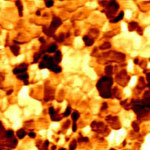 Most of the material properties investigated by atomic force microscopy are acquired by processing the deflection signal of the cantilever, which is applied to Electrostatic Force Microscopy (EFM) measurements as well. For EFM, the sample surface properties would be electrical properties and the interaction force will be the electrostatic force between the biased tip and the sample. Electrostatic Force Microscopy maps electric properties on a sample surface by measuring the electrostatic force between the surface and a biased AFM cantilever. EFM applies a voltage between the tip and the sample while the cantilever hovers above the surface, not touching it. The cantilever deflects when it scans over static charges.
Most of the material properties investigated by atomic force microscopy are acquired by processing the deflection signal of the cantilever, which is applied to Electrostatic Force Microscopy (EFM) measurements as well. For EFM, the sample surface properties would be electrical properties and the interaction force will be the electrostatic force between the biased tip and the sample. Electrostatic Force Microscopy maps electric properties on a sample surface by measuring the electrostatic force between the surface and a biased AFM cantilever. EFM applies a voltage between the tip and the sample while the cantilever hovers above the surface, not touching it. The cantilever deflects when it scans over static charges.
Apr 21st, 2010
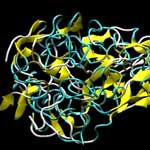 Material scientists have been fascinated by spider silks for a long time - ultra-strong and extensible self-assembling biopolymers that outperform the mechanical characteristics of many synthetic materials, including steel. While the source of these unique material properties are thought to lie in the distinct protein structures found in spider silk, the physical mechanisms behind them have remained poorly understood for decades. This is partly due to the fact that structural models of spider silk with atomic-level resolution have not been available, preventing a molecular-level analysis. So far, only small models of isolated crystalline domains of silk have been reported. Yet, the integrated structure of the semi-amorphous regions combined with crystalline domains in silk is critical for properties such as toughness and fracture mechanisms. To unravel silk's secrets and ultimately be able to create synthetic materials that duplicate, or even exceed, the extraordinary properties of natural silk, researchers need to fully understand the links between genetic makeup, chemical interactions, and structure, as well as its macroscale mechanical properties.
Material scientists have been fascinated by spider silks for a long time - ultra-strong and extensible self-assembling biopolymers that outperform the mechanical characteristics of many synthetic materials, including steel. While the source of these unique material properties are thought to lie in the distinct protein structures found in spider silk, the physical mechanisms behind them have remained poorly understood for decades. This is partly due to the fact that structural models of spider silk with atomic-level resolution have not been available, preventing a molecular-level analysis. So far, only small models of isolated crystalline domains of silk have been reported. Yet, the integrated structure of the semi-amorphous regions combined with crystalline domains in silk is critical for properties such as toughness and fracture mechanisms. To unravel silk's secrets and ultimately be able to create synthetic materials that duplicate, or even exceed, the extraordinary properties of natural silk, researchers need to fully understand the links between genetic makeup, chemical interactions, and structure, as well as its macroscale mechanical properties.
Apr 20th, 2010
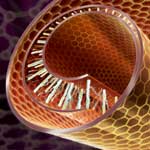 As it is becoming clearer that one of the critical issues for developing functional nanomachines is the generation of energy required to power them, research into developing nanoscale energy sources has been picking up substantially. The energy to be fed into a nanogenerator is likely to be mechanical energy that is converted into electric energy that then will be used to power nanodevices without using a battery. With the emergence of nanotechnology and the use of nanomaterials, the field of piezoelectrics and nanopiezotronics has experienced a lot of new and interesting research efforts. Researchers in Korea have now demonstrated the first use of chemical vapor deposition-grown large-scale graphene sheets as transparent electrodes for fully transparent and flexible nanogenerators.
As it is becoming clearer that one of the critical issues for developing functional nanomachines is the generation of energy required to power them, research into developing nanoscale energy sources has been picking up substantially. The energy to be fed into a nanogenerator is likely to be mechanical energy that is converted into electric energy that then will be used to power nanodevices without using a battery. With the emergence of nanotechnology and the use of nanomaterials, the field of piezoelectrics and nanopiezotronics has experienced a lot of new and interesting research efforts. Researchers in Korea have now demonstrated the first use of chemical vapor deposition-grown large-scale graphene sheets as transparent electrodes for fully transparent and flexible nanogenerators.
Apr 19th, 2010
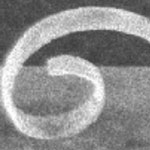 Controllable fabrication of complex, three-dimensional (3D) nanoscale structures remains a difficult challenge. Researchers are experimenting with a wide range of nanofabrication techniques, from top-down approaches such as mechanical machining to biomimetic replication of complex biotemplates to bottom-up fabrication using anisotropic self-assembly systems - to just name a few examples. New work at Johns Hopkins University utilizes the extrinsic stresses that develop during thin-film deposition - but can also be induced by external forces post-deposition - for the self-assembly of 3D curved and simultaneously patterned structures. This technique is fairly simple and low-cost since it requires only thermal evaporation and low temperature processing; the stress for self-assembly can be controlled to occur only when required. Furthermore, the layers that are selected for 3D structuring can also easily be patterned with conventional electron-beam lithographic processing.
Controllable fabrication of complex, three-dimensional (3D) nanoscale structures remains a difficult challenge. Researchers are experimenting with a wide range of nanofabrication techniques, from top-down approaches such as mechanical machining to biomimetic replication of complex biotemplates to bottom-up fabrication using anisotropic self-assembly systems - to just name a few examples. New work at Johns Hopkins University utilizes the extrinsic stresses that develop during thin-film deposition - but can also be induced by external forces post-deposition - for the self-assembly of 3D curved and simultaneously patterned structures. This technique is fairly simple and low-cost since it requires only thermal evaporation and low temperature processing; the stress for self-assembly can be controlled to occur only when required. Furthermore, the layers that are selected for 3D structuring can also easily be patterned with conventional electron-beam lithographic processing.
Apr 16th, 2010
 Graphene is being explored, among many other uses, as a replacement material for silicon in photonic devices to expand the wavelength range of operation and to improve performance. Another area where graphene potentially could replace silicon and could have a huge impact is as light-absorbing material in solar cells. Although it has been well known that graphene has very attractive properties for photovoltaic applications - tunable bandgap and large optical absorptivity - these advantages could not be exploited so far due to the problem of fabricating solution-processable, stable, and large enough, size-controllable graphene structures useful for charge collection in solar cells. Graphene quantum dots might offer a solution to these fabrication problems.
Graphene is being explored, among many other uses, as a replacement material for silicon in photonic devices to expand the wavelength range of operation and to improve performance. Another area where graphene potentially could replace silicon and could have a huge impact is as light-absorbing material in solar cells. Although it has been well known that graphene has very attractive properties for photovoltaic applications - tunable bandgap and large optical absorptivity - these advantages could not be exploited so far due to the problem of fabricating solution-processable, stable, and large enough, size-controllable graphene structures useful for charge collection in solar cells. Graphene quantum dots might offer a solution to these fabrication problems.
Apr 14th, 2010
 Even though traditional, digital computers have consistently increased in speed and complexity, they are limited by their reliance on sequential processing of instructions; i.e. no matter haw fast they are, they still process only one bit at a time. By contrast, individual neurons in our brain are very slow: they fire at only about 1000 times per second; however, since they are operating in a massively parallel way, with millions of neurons working collectively, they are able to complete certain tasks more efficiently than even the fastest super-computer. Another important distinction of our brain is that, during computing, information processing circuits evolve continuously to solve complex problems. An international research team from Japan and Michigan Technological University has now created a similar process of circuit evolution in an organic molecular layer, which also solves complex problems. This brain-like 'evolutionary' circuit has been realized for the first time in the world.
Even though traditional, digital computers have consistently increased in speed and complexity, they are limited by their reliance on sequential processing of instructions; i.e. no matter haw fast they are, they still process only one bit at a time. By contrast, individual neurons in our brain are very slow: they fire at only about 1000 times per second; however, since they are operating in a massively parallel way, with millions of neurons working collectively, they are able to complete certain tasks more efficiently than even the fastest super-computer. Another important distinction of our brain is that, during computing, information processing circuits evolve continuously to solve complex problems. An international research team from Japan and Michigan Technological University has now created a similar process of circuit evolution in an organic molecular layer, which also solves complex problems. This brain-like 'evolutionary' circuit has been realized for the first time in the world.
 Subscribe to our Nanotechnology Spotlight feed
Subscribe to our Nanotechnology Spotlight feed





